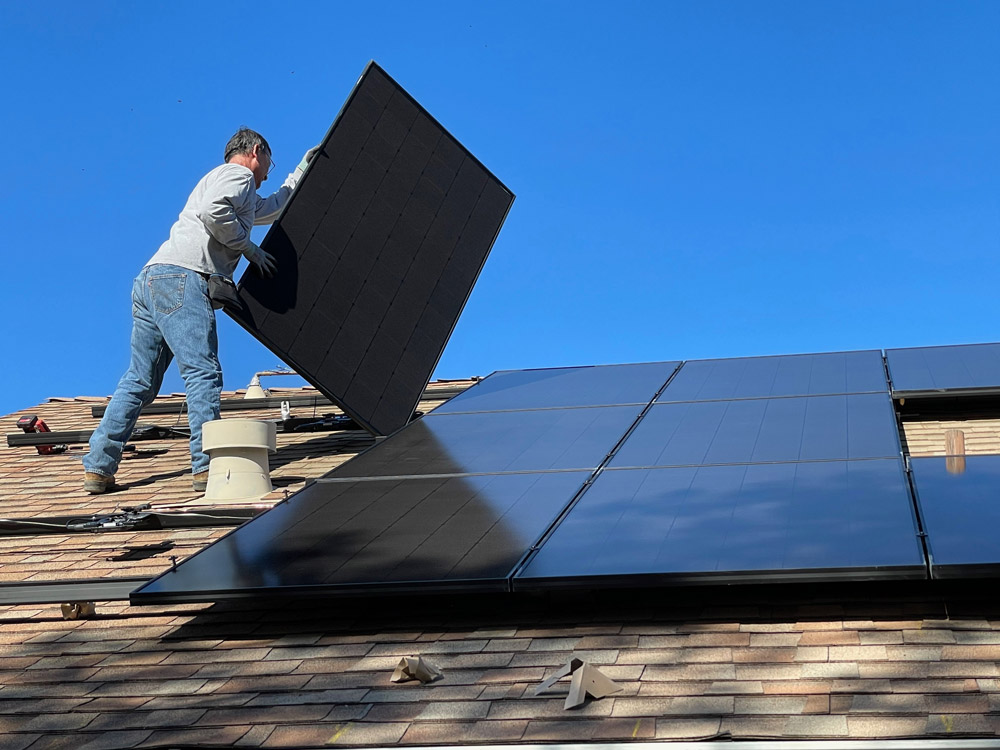With energy prices rocketing, could you benefit from your very own rooftop array? It’s time to crunch some numbers.
by Keith Wheaton-Green
Ownership of a solar photovoltaic (PV) array on your house or business premises partially frees you from high electricity bills. What you generate pushes back against the grid, first to meet your own demands then, if generation exceeds your demands, for profit. I see self-generation as power to the people, a sort of democratisation of our energy supply.
You will know from the news that electricity prices doubled during 2021. Dependent on the contract you have with your electricity supplier, this may not be evident to you yet, but you will certainly notice the increase during 2022. When the current price cap is adjusted this October, prices are expected to increase by another 50 per cent. Wholesale delivery prices increased from 53.8p/kWh on 1 February 2021 to 119.1p/kWh on 22 November 2021 (source: Ofgem). Given that retail prices have been well under those, it’s no wonder so many electricity supply companies (the ones that didn’t plan and buy ahead) have gone bust. It’s clear that UK electricity retail prices must increase dramatically.
What do solar panels cost?
For a large commercial installation, costs can be as low as £700 per installed kW. For a domestic installation they can be as low as £1,000 per installed kW but more usually around £1,200 per installed kW. An average domestic roof can fit 16 x 415-watt panels,
costing round £6,800; if it’s south-facing that array would give a peak generation of 5.81kW. That’s 6,000kWh/yr. People have assumed that because there are no grants or subsidies, there is no financial case for installing PV. They are wrong…
Financial benefits of solar
It’s impossible to predict with precision what forward electricity retail costs will be over the next five years. However, the standard variable rate for customers that switch (a good indication of real prices) is currently around 37p/kWh. A 50 per cent price rise in October takes that to 55p/kWh. Given other inflationary pressures in the UK economy, the government is very likely to introduce measures to soften the blow, but you would probably agree that an average of 50p/kWh over the next five years is a conservative estimate.
Crunching the numbers
Regardless of how it’s generated, your electricity usage will be dependent on your habits… Do you have an electric car, for example? Do you have a large family all using separate items of tech? If you are at home during the day, and therefore able to make direct use of the electricity generated by your solar array, you could use as much as 80 per cent of the power you make.
Basing calculations on a conservative estimate of using 50 per cent of the electricity you generate means you will save:
• 6,000kWh/yr x 0.5 x 50p = £1,500/yr
You will be paid 7.5p/kWh for the excess generation that you will sell via the smart export guarantee:
• 6,000kWh/yr x 0.5 x 5.5p = £225
Therefore, the total annual value of your PV array is £1,500 + £225 = £1,725.
Given you will have paid £6,800 for the installation, it will have paid for itself after four years, after which time you will be in profit by £1,725 for the lifetime of the PV array (expected to be at least 30 years).
The installation will also add to the value |of your house.
Did you know that the residents of some villages in Dorset have clubbed together and organised a bulk purchase scheme for solar panels to reduce installation costs? Could this be you? Write to Keith via newsdesk@blackmorevale.net and have your say. We’d love to hear your solar success stories or answer your questions.











Leave a Reply